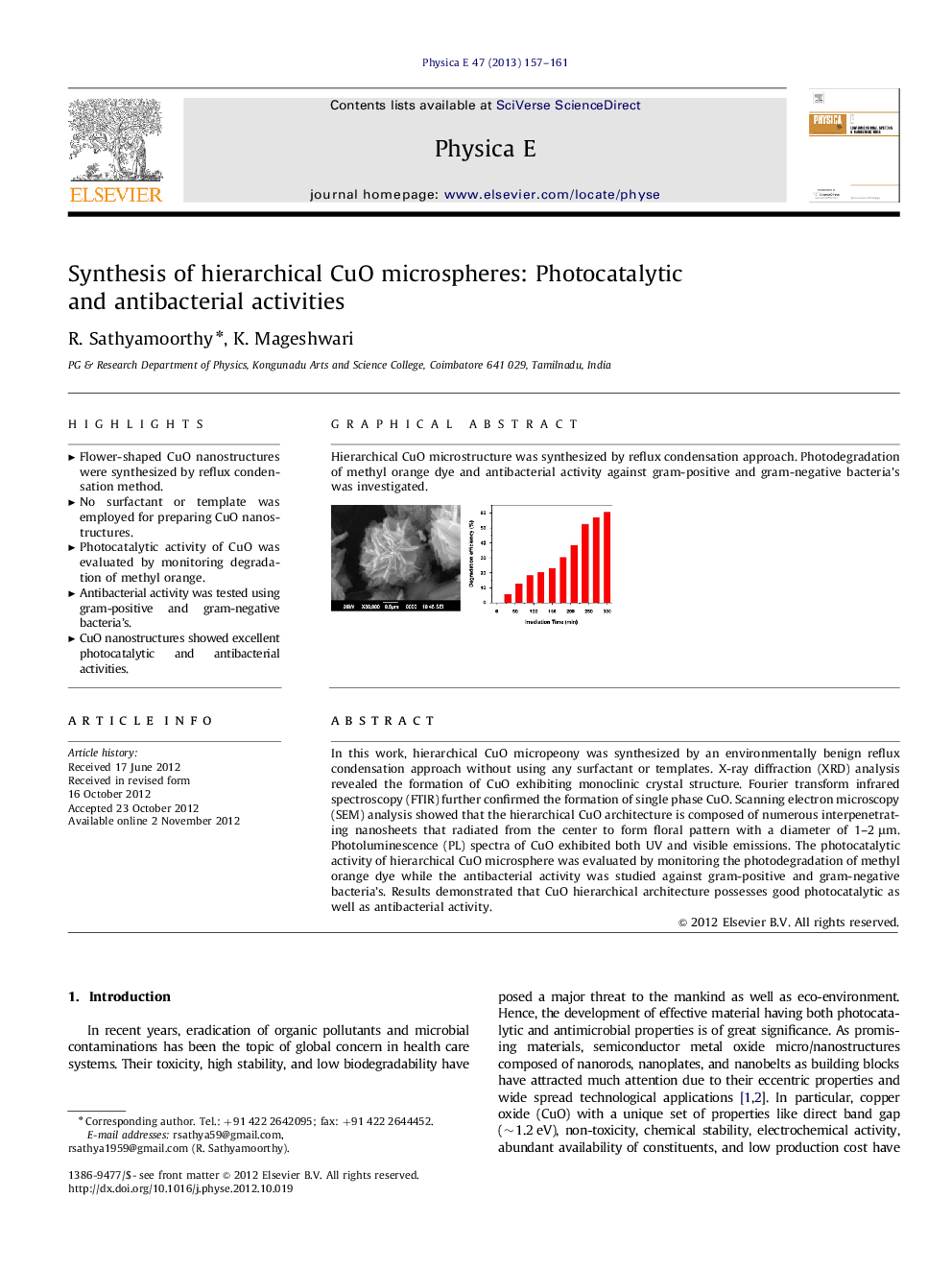| Article ID | Journal | Published Year | Pages | File Type |
|---|---|---|---|---|
| 1545086 | Physica E: Low-dimensional Systems and Nanostructures | 2013 | 5 Pages |
In this work, hierarchical CuO micropeony was synthesized by an environmentally benign reflux condensation approach without using any surfactant or templates. X-ray diffraction (XRD) analysis revealed the formation of CuO exhibiting monoclinic crystal structure. Fourier transform infrared spectroscopy (FTIR) further confirmed the formation of single phase CuO. Scanning electron microscopy (SEM) analysis showed that the hierarchical CuO architecture is composed of numerous interpenetrating nanosheets that radiated from the center to form floral pattern with a diameter of 1–2 μm. Photoluminescence (PL) spectra of CuO exhibited both UV and visible emissions. The photocatalytic activity of hierarchical CuO microsphere was evaluated by monitoring the photodegradation of methyl orange dye while the antibacterial activity was studied against gram-positive and gram-negative bacteria's. Results demonstrated that CuO hierarchical architecture possesses good photocatalytic as well as antibacterial activity.
Graphical abstractHierarchical CuO microstructure was synthesized by reflux condensation approach. Photodegradation of methyl orange dye and antibacterial activity against gram-positive and gram-negative bacteria's was investigated.Figure optionsDownload full-size imageDownload as PowerPoint slideHighlights► Flower-shaped CuO nanostructures were synthesized by reflux condensation method. ► No surfactant or template was employed for preparing CuO nanostructures. ► Photocatalytic activity of CuO was evaluated by monitoring degradation of methyl orange. ► Antibacterial activity was tested using gram-positive and gram-negative bacteria's. ► CuO nanostructures showed excellent photocatalytic and antibacterial activities.
